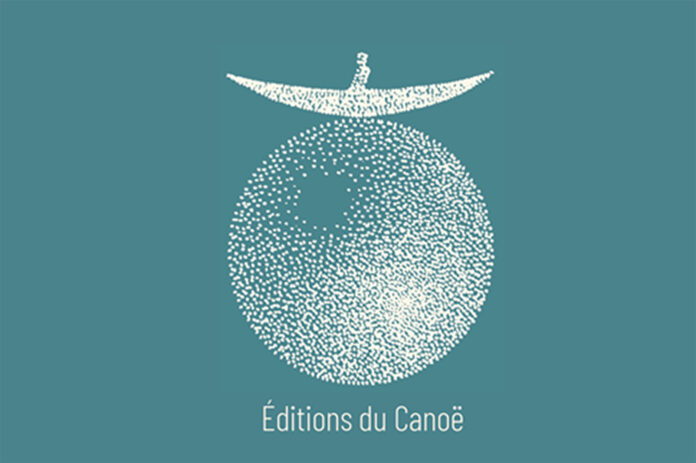Les Editions du Canoë were created in 2017. The director, Colette Lambrichs, when she made this decision, wondered if the undertaking was presumptuous, too bold, in a nutshella little crazy. She did not want to decide on a precise course of action. She left the field open, giving everyone the opportunity to publish novels, short stories, essays of all kinds without having a preconceived idea. She is a publisher with a long experience in this area.
At the beginning
Born in Brussels, she studied philosophy and art history. She has worked in art galleries, founded the Ready-Made Museum and also curated some exhibitions, including, “La Vénus de Milo ou les dangers de la célébrité” at the Palace of Fine Arts. She is a member of the editorial staff of the journal ‘Obliques’. In 1972 she decided to move to Paris, where she worked for a gallery founded by Skira. Colette met Joachim Vital, who created a publishing house, Les Editions de la Différence, in 1975, and she became his main collaborator. Roughly 2,000 books are printed.
She published two novels and short story collections: “Tableaux noirs” (1980), “Histoire de la peinture” (1988), Doux leurres (1997), “La Guerre” (2002), ‘Logiques de l’ombre’ (2006) and “Eléonore” (2013). After Vital’s death in 2010, the adventure continued until 2017. However, before the end she exhibits her works in “papier mâché”, revealingher artistic talent.
If the ambition of this young publishing house seems modest, it is worth pointing out that the logo was designed by the Argentine kinetic artist Julio Le Parc. The first titles released underline the eclecticism desired by Colette Lambrichs. There was “Tombeau pour Damien”, by Claire Fourier, which tells the life and terrible end of the man who had tried to kill Louis XV. André Bouny tells about his travels to Vietnam after the war, making us discover this country’s great beauties, but also the many wounds that the conflict has left.
Building a library
The architect Roland Castro, in a pamphlet entitled “Le Corbusier n’a pas rencontré Freud”, has written very polemical pages about the sense of architecture of our time, after the failure of the suburban buildings that turned out to be ghettos with enormous economic and social problems. Lina Lachgar produced a fine essay on Max Jacob, the unhappy poet. He was a Jew converted to Catholicism, homosexual, close friend of Picasso and Modigliani, who turned out to be one of the greatest French writers of the early twentieth century and who died in the Drancy camp near Paris in 1944.
The scholar tries to analyze all the contradictions of this strange and talented man in order to better understand and even read with a new eye his work. Les Editions du Canoë also publishes the poet French Michel Bulteau and a long interview by Claude Margat, an expert on China’s issues, but also a painter, with Olivier Desgranges (“L’Echappéechinoise”).
Moreover, the director approciates Jacques Bellefroid’s Soulages and, above all, “Le Roman tchèque” by the great Czech thinker Ladislav Klima.
But the first book to have a great sales success is “La Taupe rouge” by Julian Semenov, a Russian author of science fiction novels. He plans to release another title by the same author for the autumn: ‘Des Diamants pour le prolétariat’. To conclude this brief panorama, it is worth talking about the art books, such as the impressive monograph by Julio Le Parc, in collaboration with the Editions Exils; the monograph by Martha Le Parc, less known than her husband, but of great value, and the beautiful book on jewelry by Gabrielle Haardt, the occasion of a retrospective in the France’s capital.
And then, the Covid-19 arrived…
As it occurred to other publishing houses in Paris, the recent pandemic has forced Les Editions du Canoë to suspend its publications. Now, it is preparing the release of a dialogue, of rare quality, between the novelist Jacques Roubaud, a mathematician by training, and Michel Chaillou, professor of literature and great lover of geography, who recently died.
There are some conversations, held between 1992 and 1993, between two little-known but important figures in history, Balthasar Baro, secretary of the great poet Honoré d’Urfé (he is the one who finished the poet’s great work, “L’Astrée”) and Arthur Cayley, great innovator in the field of algebra. The two men meet on the beach of








